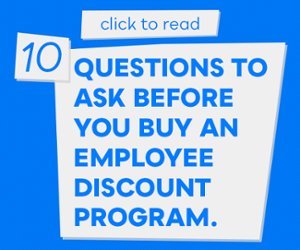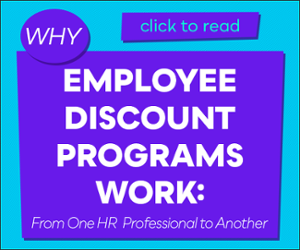It's time to step up our game.
Give it our all.
Bring in the best.
Become the Greatest Of All Time.
It's time to get pumped for open enrollment season.
The mere mention of "open enrollment" probably won't keep the average employee up at night or give them nightmares. However, only HR professionals truly grasp the full scope of what "open enrollment" entails.
In the spirit of sports, open enrollment is not just about the game itself. It's about all the training and preparation that happens before and after the game.
As HR professionals, we’ll never be as well-known as the LaBrons or Simones of the sports world, but open enrollment can be likened to what these professional athletes must do to be successful.
Just like any team sport, HR professionals understand the importance of being well-prepared in the pre-season; they know the pressures of a long regular season, and they also understand that evaluating their progress during the off-season is just as crucial as performing when all eyes are on them.
Each season also requires us to play a specific role. From being a talent scout to a consultant, a personal trainer to a coach. Open enrollment is a year-round process aimed at ensuring that every employee is fully informed about their benefits package and all it offers them throughout the year, regardless of the season.
But hey, it doesn’t have to be a stress-fest. Instead of carrying that heavy burden alone, HR professionals can lighten their load by becoming catalysts instead of gatekeepers. By empowering employees to take charge of their own decisions, not only will it make your life easier, but it will also turn them into savvy benefits consumers in the long run.
Of course, it won’t be a walk in the park. It will require some serious preparation. But if you do it right, open enrollment can be an awesome opportunity to connect with your employees and strengthen that employer/employee bond.
10 Open Enrollment Tips for HR Professionals
Setting the stage with meticulous planning and a well-thought-out strategy is key to ensuring a seamless open enrollment process. Let's dive into some brilliant ideas to kickstart your journey.
1. Communicate, communicate, and communicate some more.
.jpg?width=389&name=robots%20(003).jpg)
Just like employees have different roles in the organization, they also have different communication preferences. So, to avoid any confusion, make sure you use various channels to spread the word. You could:
-
-
- Send emails or snail mail educational resources straight to their homes.
- Gather your team for in-person information sessions.
- Ping them with texts.
- Shoot short and snappy videos on internal social networks.
- Whip up an open enrollment podcast for them to tune into.
-
2. Don't just communicate. Educate.
It's not just about telling employees they must pick their open enrollment options. They need to grasp what these choices actually mean. Shockingly, only 6% of respondents in a United Healthcare survey could define essential health insurance terms like plan premium, deductible, co-insurance, and out-of-pocket maximum.
So, it's crucial to educate employees on the meaning of these terms. This way, they can make more informed decisions when it comes to selecting their plans. Not only will this make them smarter healthcare consumers, but it will also enable them to make better choices throughout the year.
You could also consider launching a pre-enrollment email campaign that includes important information about benefit terms and the differences between plan options. Delivering it in bite-size chunks can help people process and remember the information even better.
3. Spice things up with real-life examples.
How about diving into some real-life examples to help employees understand how to make the most of their benefits?
People tend to connect and learn better through stories, which is why companies have seen great success in creating 'sample' employees with specific healthcare challenges. By guiding them through real-life scenarios, we can demonstrate how to navigate finding the right providers and accessing the most suitable care for their needs.
It's important for people to become savvy healthcare consumers to better manage and reduce costs. For example, stories could effectively demonstrate how unnecessary emergency room visits and out-of-network procedures from one employee will impact everyone's rates. This knowledge will go a long way in helping to keep next year's premium increases in check.
4. Require active enrollment.
.jpg?width=301&name=checks%20(003).jpg)
Instead of passive enrollment where selections roll over from the previous year, require employees to actively choose their benefits coverage. This not only boosts their engagement with the company but also reinforces the value of their benefits.
After educating your employees, it's time to step back and let them take the lead. Provide helpful information and empower them to make an informed decision about which plan will be the best fit for their circumstances.
It's their turn to make the call!
5. Set crystal clear deadlines.
Choosing the perfect amount of time for open enrollment is like hitting a hole in one. Most organizations give their employees a window of about two to four weeks to make their selections. Smaller companies need only a week or so. Limited selection windows help to maintain a sense of urgency and prevent procrastination. However, you’ll want to make sure to give your globe-trotters and overtime warriors ample time to fully understand the plans, so they can familiarize themselves with any changes and make informed decisions.
Shout all deadlines from the rooftops (or maybe just send some emails) to ensure everyone is on the same page and that all employees get their selections in on time.
6. Hold Q&A sessions.
Depending on the size of your organization, it's smart to kick off with a company-wide meeting to cover the main points and introduce any changes. Then, follow up with a series of smaller, optional sessions where employees can ask questions and dive deeper into the benefits. Make sure representatives from each plan are available for specific coverage questions.
Then, keep your door wide open. Some employees might prefer one-on-one advice or feel more comfortable asking questions privately. Don't hesitate to invite spouses and family members to your open enrollment orientation sessions so everyone has the tools and resources they need to make the best decision for their situation.
Additionally, many plan advisers offer the option for employees to schedule individual appointments. This can be a fantastic opportunity for those seeking extra guidance and understanding.
7. Show them you're in their court.
Open enrollment is all about the employees and their benefits. The main goal of providing health insurance, or any other benefit, is to genuinely add value to their lives. Unfortunately, it doesn't always feel that way, especially with healthcare (and therefore, healthcare premium) costs rising year after year.
So, take the time to listen to your employees and find out what matters most to them. Use that insight to prioritize the benefits you offer. After all, employees often don't realize the immense effort that goes into selecting their benefits. They don't see the countless hours you've spent comparing plans and negotiating rates on their behalf. They don’t see the amount of money the company coughs up for its portion of everyone’s premiums. It's up to you to show them the thoughtfulness behind these decisions because no one else will.
8. Let's make this party a little more exciting!
Let's face it, when we hear "health insurance," we don't exactly jump up and down with excitement. It's pricey and can be a bit overwhelming. Even though it's necessary, we often get tired of discussing it. (Did I just say that out loud?)
So, it's up to HR to a take up the role of cheerleader – and show off the value of all their employee benefits.
Why not treat employees to a delicious lunch during the information sessions or reward them when they submit their selections by a certain date? You could even splurge on a few super cool prizes that get your employees excited. For example, have them enter a drawing for a chance to win awesome rewards when they attend the information sessions. Turning a boring task into a game (known as gamification) is a proven way to keep motivation and engagement high.
In other words, give them a little incentive to care. It might sound a bit silly, but it'll make the whole process easier when employees have an immediate (and entertaining) reason to get involved.
9. Keep it simple, as if explaining to a beginner.
Employee benefits and open enrollment can be a confusing maze for your employees. They don't live and breathe this stuff like you do. So, it's important to break things down in simple terms that even a five-year-old could understand. Start with the basics and then provide more detailed resources for those who want a deeper dive. No need to overwhelm them with a firehose when all they're asking for is a sip of water.
To make it easier for them, prepare simple summary snapshots, individual cost sheets, lists of in-network locations, and handy how-to sheets. These can be distributed as needed, so employees have all the information at their fingertips. And if you can't always be there to answer their questions, consider creating a central location, like an internal wiki, where they can find all the resources they need.
Remember, simplicity is key when it comes to helping your employees navigate the complex world of benefits and open enrollment.
10. Give them the whole nine yards.
Health insurance may be the star of open enrollment, but the rest of your employee benefits are important players too. For one thing, employees also need to select any voluntary benefits they want during the same time period.
Here's a little secret: you should promote ALL employee perks even if they don't require re-enrollment.
Perks and lifestyle benefits bring many positives to the court: they can help your employees save their hard-earned cash, support employees in their personal goals, and make it affordable for employers to offer a wide variety of benefits. For example, employee discount programs have the power to save employees hundreds, or even thousands, of dollars each year on their everyday expenses and travel costs. (If you want to witness the incredible impact these programs can have, take a look at this case study: What Can Employee Discount Programs Do?)
By offering these perks, you're demonstrating that you value more than just health insurance—you care about your employees' overall well-being and financial security. It’s a true win-win!
What Makes Open Enrollment a "Win"?
Measure your success by first defining it. Take a moment to ask yourself (and your team) what goals you want to achieve during this year's open enrollment. Consider how any changes you make will impact your corporate culture. Think about what you want your employees to take away from the process. And don't forget to explore how technology and other tools can help make this year even better than the last.
Once you have a game plan in place, stick to it. Sure, there may be a few rough plays along the way, but with a solid strategy, more things will go right than wrong.
Sometimes we fall into the trap of thinking that stress equals productivity. But in reality, stress often hinders our ability to get things done. So, remember, open enrollment can be a resounding win without all the unnecessary pressure you put on yourself.
For more tips to help you prepare for open enrollment, you may want to check out our article: What To Do When Employees Complain About Their Benefits Costs.







